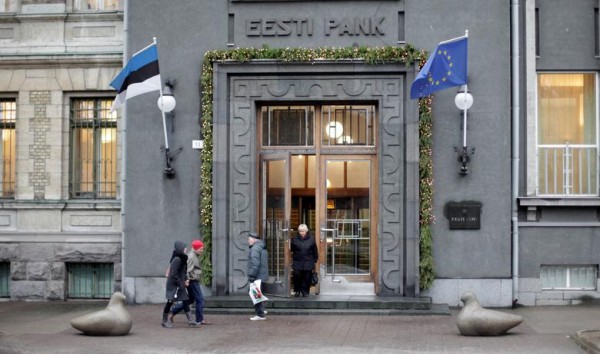
FILE PHOTO: People walk past Estonia's central bank building in Tallinn, Estonia December 15, 2011. REUTERS/Ints Kalnins/File Photo
However, this news is tempered by the inflation forecast. While this year's average price increase is less than 5 percent, the rate of price increase in 2022 will approach 7 percent. The rapid rise in consumer prices is temporary and is expected to ease in the second half of next year.
Estonian's economic growth is hampered by global supply challenges, but labour shortages are increasingly hampering further development in most areas of activity. Existing production resources are also already at an all-time high. Further economic growth will therefore be more difficult and next year's growth will be slowed down by exceptionally fast price growth.
The central bank affirmed that it is closely monitoring how fast real estate prices and people's debt burden are growing. Due to limited consumption opportunities and savings taken out of the second pension pillar, the amount of free money has grown. Demand for goods and services is high. In addition, interest in residential real estate remains high.
Given the current high demand, new real estate is not entering the market in sufficient quantities and this is fuelling real estate price growth. If real estate prices continue to rise very rapidly and the increase in the debt burden of people accelerates significantly, the central bank is ready to tighten the conditions for granting housing loans to curb it.
Advertisement / Reklaam
Advertisement / Reklaam
According to the central bank, the exit of the state budget from a deficit would help curb the rapid rise in prices. The sectors most affected by the restrictions - tourism, leisure, accommodation and catering - have not yet fully recovered, but most sectors are doing well or very well. The rapid growth of public spending and the stimulation of demand are further boosting the rise in prices in a situation where it is already fast.In absolute terms, the central bank forecasts an economic volume of €30.37 billion at current prices this year, €33.02 billion next year, €35.48 billion in 2023 and €37.82 billion in 2024. At constant prices, economic growth is forecast at 2.8 percent in 2022, 3.9 percent in 2023 and 2.9 percent in 2024.
The unemployment rate is projected to fall to 6.2 percent this year, 5.5 percent next year, 5.3 percent in 2023 and 4.7 percent in 2024.
The state budget is expected to improve. The current forecast is a deficit by 3.6 percent of gross domestic product (GDP) this year, but next year the deficit will decrease to 2 percent of GDP, in 2023 to 1.6 percent of GDP and in 2024 to 0.7 percent of GDP.

